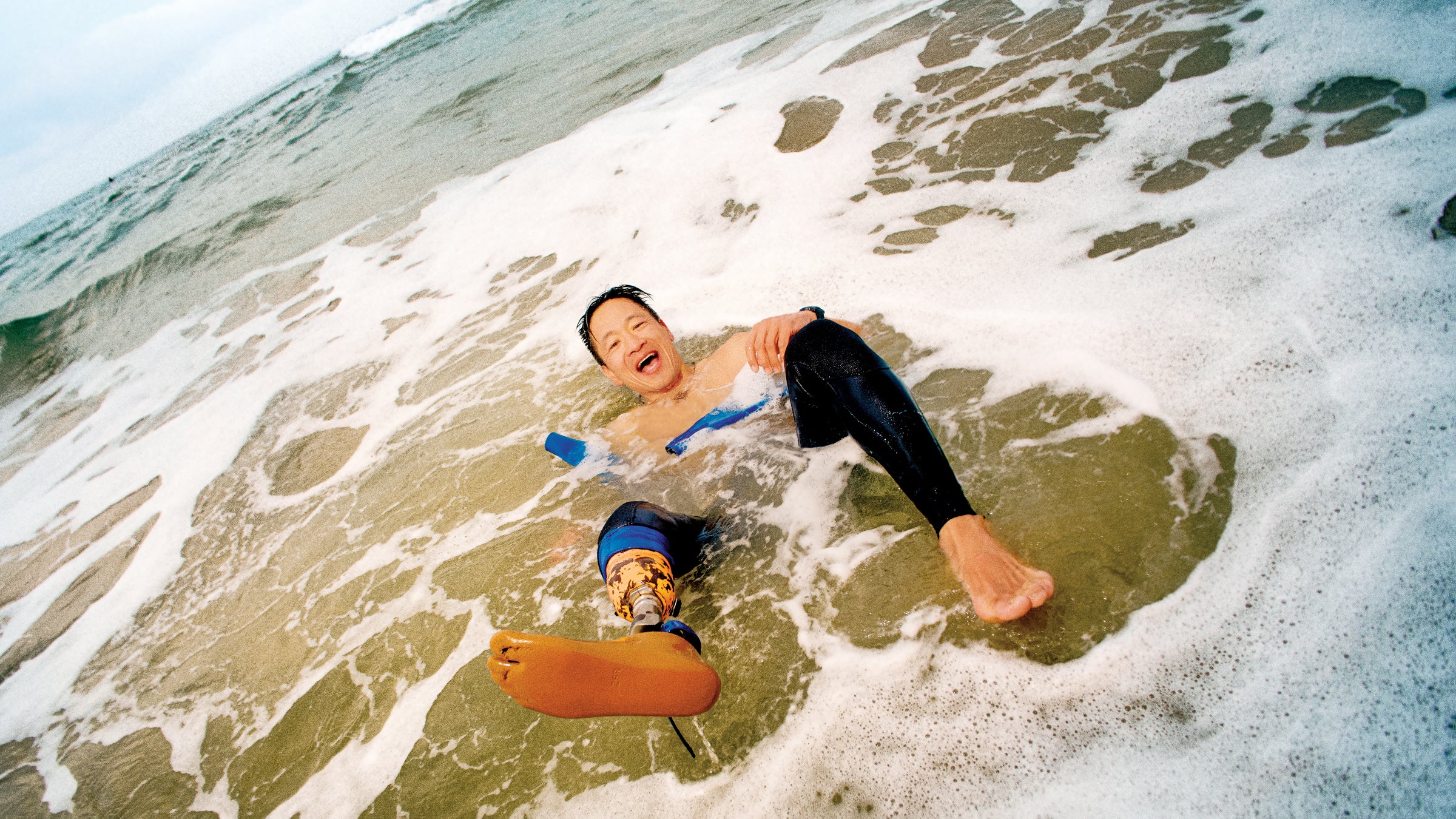The Total Joy and Mayhem of Being Albert Lin
A relentless explorer and celebrated TV host, Lin has built his on-camera identity on movement, resilience, and inspiration. But on a volcano in Ecuador—surrounded by fellow amputees—he finally lets himself be seen.
New perk: Easily find new routes and hidden gems, upcoming running events, and more near you. Your weekly Local Running Newsletter has everything you need to lace up! .
With all the expeditions he’s been a part of, all the technology he’s developed, all the discoveries he’s covered, I’m used to Albert Lin being one of the more interesting people in a room—or even the most well-known. But walking down the street in Quito, Ecuador, I didn’t realize he was this famous.
We are headed to a coffee shop when a woman with her son recognizes him and hollers out the window of her car.
“Excuse me!” she says. “We know you!”
She barely comes to a stop before getting out to take a picture, but in her hurry forgets to take the car out of gear. It lurches forward, and she dives back in to put it in park.
Fifteen minutes later, a young woman approaches to ask for a picture and tell Lin how much she loves his National Geographic TV show, Lost Cities, in which he goes looking for archaeological evidence of vanished civilizations. In fact, she wants to show him exactly which episode she just watched.
This happens pretty often in Central and South America. Lin has done a lot of work here. Unlike the programs that dominate cable TV by rehashing tired mysteries or paranormal encounters, Lin’s show lives in the freshly turned soil of archaeological inquiry. He’s usually sharing new findings during an episode about, say, the empires that once encompassed Guatemala, Ecuador, and Peru. Often, those findings show that ancient civilizations were a lot more sophisticated than we thought. His work helps dignify Indigenous history. But it’s not just that.
He played the part of a motivational icon, because being inspirational was how he moved through the world.
Before getting coffee, Lin toured the (ROMP) building, a converted split-level with balance bars in the living room and plaster dust floating out of a backyard workshop. That’s where a team of prosthetists uses recycled parts to design and build custom devices for amputees all over South America. Lin is himself an amputee and came to Ecuador as part of clothing brand Cotopaxi’s sponsorship of ROMP’s annual mountain climb fundraiser.
He shook a lot of hands at ROMP. He jogged with people testing out their carbon fiber running blades. He played the part of a motivational icon, because being inspirational was how he moved through the world. Sometimes, it could be a little much.
“You know how some people lose their shit when they meet Taylor Swift?” sobbed Léa Richer, a United States–based prosthetist, when she met him. “You’ve been my Taylor Swift for years.”









